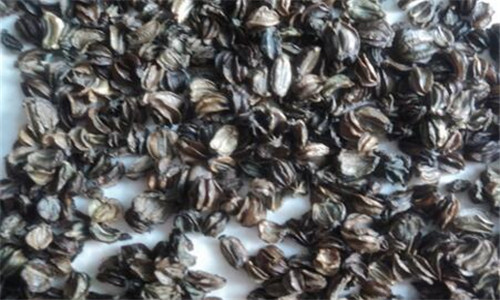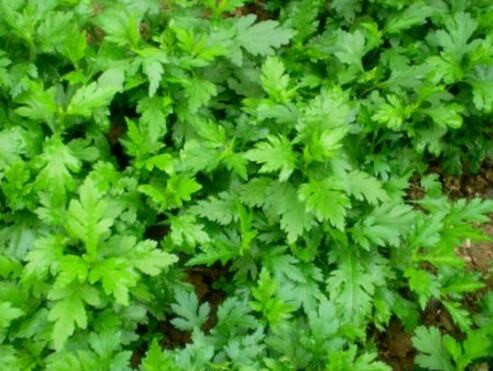How much is the market price of herb Notopterygium seeds per jin? What effect does it have? When will the seeds be sown? Species
Notopterygium, a perennial herb of Umbelliferae and Notopterygium, is distributed in Shaanxi, Sichuan, Gansu, Qinghai and Xizang of China. So, how much is the market price of Notopterygium seeds per jin? What effect does it have? When will the seeds be sown? What are the planting techniques?

First, how much is the market price of Notopterygium seeds per jin?
The price of Notopterygium seeds is about 50-70 yuan per jin, but the price varies greatly due to the quality, variety, producing area and market of the seeds. Notopterygium likes cool and humid climate, cold-resistant, slightly shade-tolerant, suitable for cultivation in sandy loam soil with deep soil layer, loose soil, good drainage and rich in humus, but not suitable for planting in low humid areas. Seed propagation or rhizome propagation can be used in production.
Second, what is the effect of Qiang Huo?
1. Antipyretic effect of volatile oil from Notopterygium notopterygium by intragastric or intraperitoneal injection, the body temperature of febrile rats was significantly decreased and had significant antipyretic effect.
2. Analgesic effect: the volatile oil of Notopterygium notopterygium was given to mice for 3 consecutive days, and then 0.5% acetic acid solution was injected intraperitoneally. It can be seen that the volatile oil of Notopterygium notopterygium can significantly reduce the writhing times of mice and has a significant analgesic effect.
3. Effect on cardiovascular system: the water-soluble part of Radix Notopterygii has obvious antagonistic effect on arrhythmia, which can obviously shorten the duration of arrhythmia and delay the occurrence of arrhythmia induced by aconitine in mice. The effect tended to increase with the increase of dose, but decreased when the dose increased to 12 g / kg.
4. Antishock effect: 0.5 ml of Radix Notopterygii decoction with a concentration of 50% was continuously given to mice for 12 times, and the antishock effect was obvious, but a large dose (concentration 100%, dose 1 ml) was ineffective at one time, that is, a large dose could not improve the antishock effect of animals.
5. Bacteriostatic effect: when the dilution of Notopterygium injection is 0.008 ml / ml and 0.004 ml / ml, it has obvious inhibitory effect on dysentery, Escherichia coli, typhoid bacillus, Pseudomonas aeruginosa and Staphylococcus aureus.
When will Qiang work be sown?
The seeds of Notopterygium notopterygium have the same post-embryonic ripening as ginseng seeds. the newly collected seeds are dried and stored in a low temperature place or in the refrigerator to be stored in wet sand from May to June of the next year, and stored outside in a cool place to be taken out and sown in early spring and March of the next year.
Fourth, what are the planting techniques?
1. Soil preparation and fertilization: in planting Notopterygium, fields with high topography and good drainage should be selected for intensive cultivation, with 3000 kg of soil miscellaneous fertilizer, 20 kg of urea and 50 kg of phosphorus and potassium fertilizer per mu, and then wait for sowing or transplanting roots.
2. Weeding in middle ploughing: after finishing the seedlings of Notopterygium, attention should be paid to weeding by ploughing, watering to preserve moisture in dry weather, and timely drainage in overcast and rainy weather.
3. Rational fertilization: Notopterygium was fertilized once before and after the Beginning of Autumn, with 10 kg urea and 10 kg potassium dihydrogen phosphate per mu, and a layer of soil and miscellaneous fertilizer after clearing the fields in winter.
4. Picking flowers and removing buds: after Qiang lives in budding, the buds should be removed except for planting to prevent the consumption of nutrients.
5. Pest control: the diseases of Notopterygium are less. If it is found that according to the conventional method, the pests are mainly yellow butterfly larvae biting leaves, killing with pyrethroid pesticides, and underground pests with phoxim.
6. Harvest and processing: Qiang Huo is generally harvested in the autumn of 2-3 years after sowing, and the ground stems and leaves are withered and harvested. The ploughed underground roots and stems of Notopterygium are removed, dried or dried, and can be sold as medicine. The yield per mu is about 300 kg.
Time: 2019-03-20 Click:
- Prev

When will Houttuynia cordata (folded ear root) be planted? When is the best season to eat? What are the effects? (with planting technology)
Houttuynia cordata Thunb, also known as Herba Houttuyniae, Herba Houttuyniae, also known as Herba Houttuyniae, is also called Herba Houttuyniae, Herba Houttuyniae, which can be seen everywhere in the past. Houttuynia cordata Thunb is a traditional Chinese medicine for both medicine and food. In recent years, the demand for Houttuynia cordata Thunb is growing rapidly, and the price is rising continuously. More and more medicine farmers pay attention to its cultivation. What is the prospect of planting houttuynia cordata?
- Next

How to grow wild vegetable chrysanthemum brain? How do you make it delicious and simple? What are the effects and effects?
Chrysanthemum brain is the most common dish on the folk table, especially chrysanthemum brain duck egg soup is a good product for summer heat prevention. Chrysanthemum is rich in nutrition and is a kind of wild vegetable with great development prospect. So, how to plant chrysanthemum brain? How do you make it delicious and simple? What are the effects and effects? How to plant chrysanthemum brain
Related
- Fuxing push coffee new agricultural production and marketing class: lack of small-scale processing plants
- Jujube rice field leisure farm deep ploughing Yilan for five years to create a space for organic food and play
- Nongyu Farm-A trial of organic papaya for brave women with advanced technology
- Four points for attention in the prevention and control of diseases and insect pests of edible fungi
- How to add nutrient solution to Edible Fungi
- Is there any good way to control edible fungus mites?
- Open Inoculation Technology of Edible Fungi
- Is there any clever way to use fertilizer for edible fungus in winter?
- What agents are used to kill the pathogens of edible fungi in the mushroom shed?
- Rapid drying of Edible Fungi

